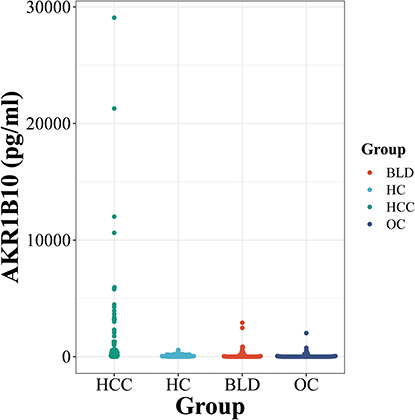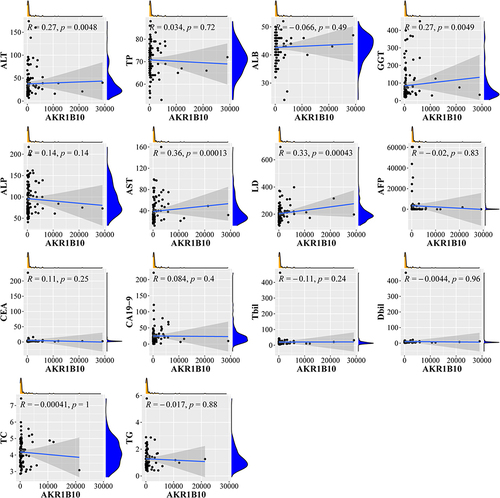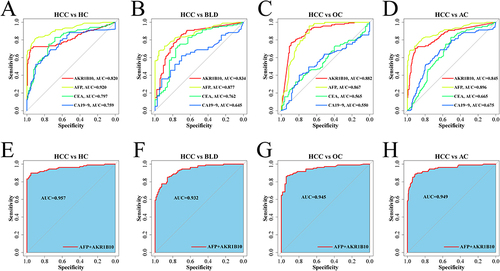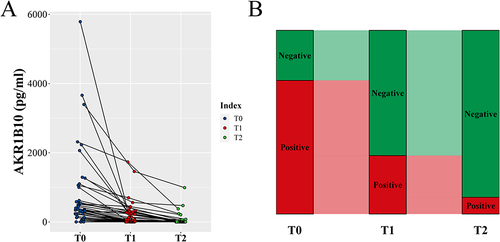Figures & data
Table 1 The Baseline Characteristics of the Subjects Included in This Study
Figure 1 Serum AKR1B10 levels in various groups.

Table 2 Association Between AKR1B10 Expression and the Clinicopathological Parameters of HCC Patients
Figure 2 Correlation of serum AKR1B10 with other laboratory indicators.

Table 3 Diagnostic Parameters of AKR1B10, AFP, CEA, and CA19-9 to Distinguish HCC Group from Control Groups
Figure 3 Diagnostic performance of serum AKR1B10, AFP, CEA, and CA19-9 in HCC. (A–D) ROC curves of serum AKR1B10, AFP, CEA and CA19-9 differentiating HCC from HC, BLD, OC, and AC groups; (E–H) ROC curves of combining serum AKR1B10 with AFP differentiating HCC from HC, BLD, OC, and AC groups.

Table 4 Positive Rates of Serum AKR1B10, AFP, CEA, and CA19-9 in HCC Patients
Table 5 Diagnostic Parameters of Serum AKR1B10 to Distinguish AFP-Negative HCC Group from Control Groups
Figure 4 Diagnostic performance of serum AKR1B10 in AFP-negative HCC. (A–D) ROC curves of serum AKR1B10 differentiating AFP-negative HCC from HC, BLD, OC, and AC groups.

Figure 5 Changes in serum AKR1B10 levels before and after surgery. (A) Serum AKR1B10 levels in HCC patients who underwent resection at pre-surgery, 1–2 days after surgery, and 3–4 days after surgery; (B) Positive proportions of serum AKR1B10 in HCC patients who underwent resection at pre-surgery, 1–2 days after surgery, and 3–4 days after surgery.

